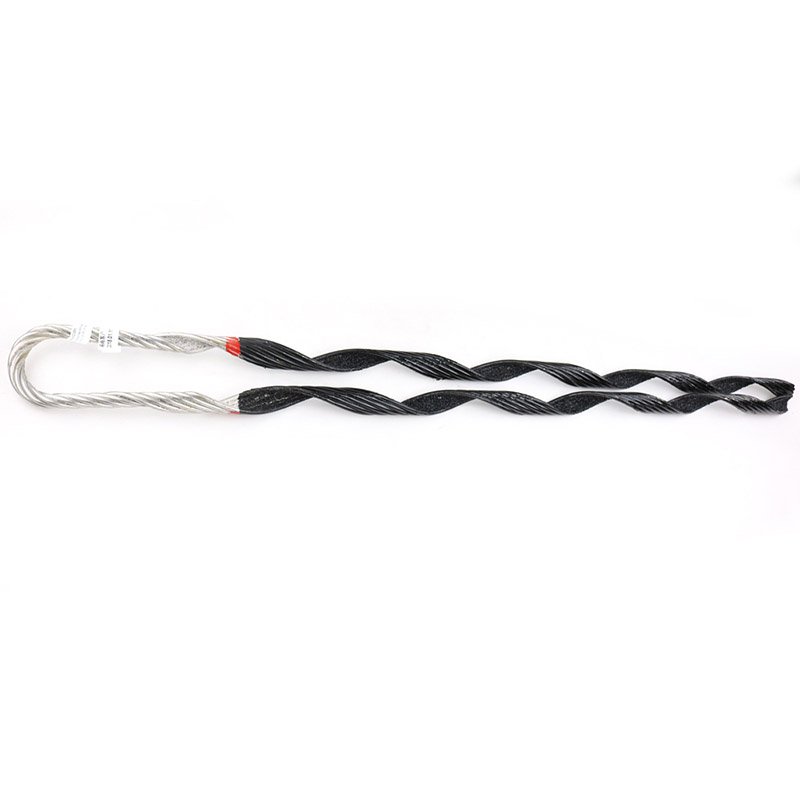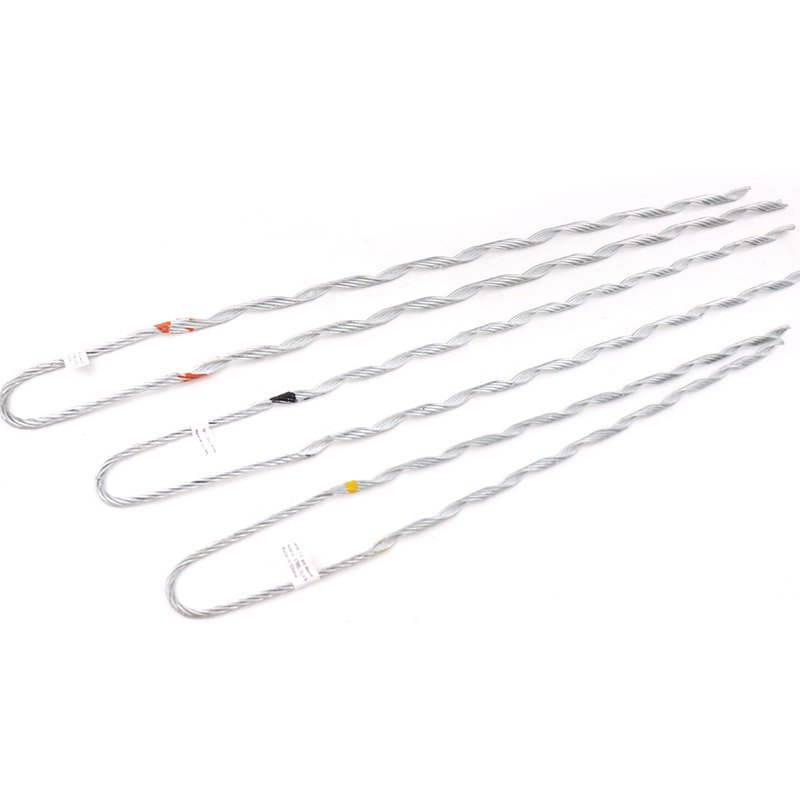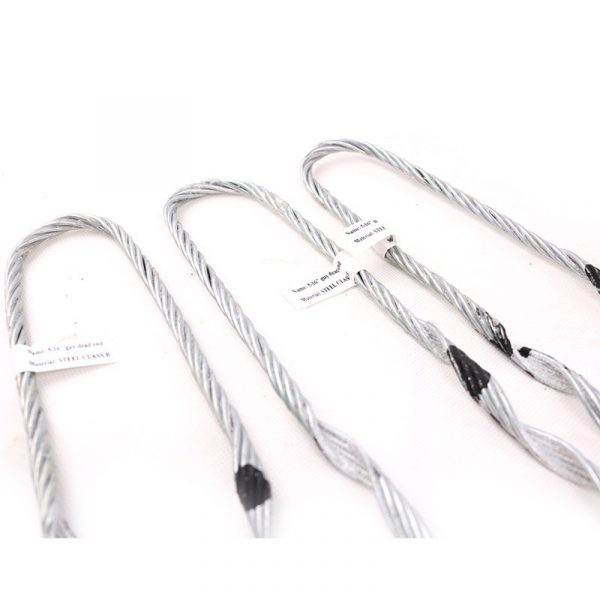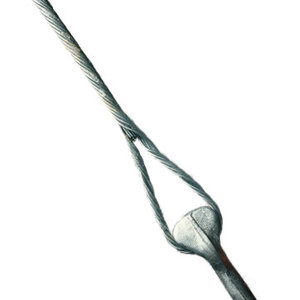A distribution grip dead end refers to the method of securing and supporting cables or conductors. It works in electrical installations, transmission systems and telecommunication networks. It also helps to terminate the end points of a conductor within the system. The dead end grips hold the cables in place to prevent sagging or strain on the cable. The distribution grip is a type of cable grip used to grip onto cables in various designs and sizes. This helps them to accommodate different types and sizes of cables. The dead end refers to the termination point of a cable where they connect to a terminal or a piece of equipment. Dead ends help to route and secure cables within an installation. Common types include bolted, suspension, compression and guy grip distribution grip dead end.
Accessories used with distribution grip dead end
Distribution grip dead ends work with several accessories that help to ensure their reliability. The accessories used vary depending on the specific requirements of the installation and type of cables used. They also help to ensure proper installation, support and protection of cables. The following are the common accessories used with distribution grip dead end.

- Thimbles – these are metals placed inside the loop of the dead end. They help to protect the cable from abrasion and wear. They provide a smooth surface for the cable to bend around to reduce the risk of damage.
- Strain relief clamps – the clamps help to relieve strain on the cables by distributing the load along the length of the cable. These are very useful in installations where cables face wind, vibration or other environmental factors.
- Installation tools – there are various tools required for installing and tensioning distribution grip dead ends. These include cable pullers, tensioning devices and cutting tools.
- Insulation – insulating materials help to provide electrical insulation or protection against environmental elements. The materials selected depends on the application and requirements of the installation.
- Supporting hardware – this includes brackets, screws and other hardware used to mount and support the dead ends.
- Protective coating – there are various coatings applied to distribution grip dead end and related hardware. They help to prevent rust and corrosion on the components.
- Preformed line products – these include devices such as clevises, rods, plates and other hardware components. They help to anchor and secure the grip dead end to the structure.
Benefits of using a distribution grip dead end
Distribution grip dead ends provide various benefits to electrical and data communication installations. The dead end grips contribute to more efficient, reliable and safe electrical and data communication infrastructure. The following are the common benefits of using a distribution grip dead end.

- Secure cable support – dead ends provide a secure method for supporting cables at termination points. This helps prevent sagging or drooping of cables which can lead to strain, damage or other interference with other components.
- Improved cable management – dead ends help organize and manage cables by providing a fixed termination point. This helps to ease routing and maintain cables withing the installation.
- Longevity of infrastructure – this is by preventing cable damage and ensuring proper cable support. This helps to reduce maintenance costs and downtime related with cable failures.
- Ease of installation – many dead end grips have designs for easy installation which requires minimal tools and labor. This helps to save time and resources during the installation process.
- Reduced cable damage – distribution grip dead ends reduce the risk of abrasion, kinking or other forms of damage. This can happen during installation or due to environmental factors like wind or vibration.
- Enhanced safety – proper installation of cables can reduce the risk of accidents or injuries caused by loose cables. The dead end grips can help ensure the cables are properly supported and maintained.
- Flexibility and adaptability – distribution grip dead ends come in various sizes and designs. This helps to hold different types and sizes. The flexibility allows for customization to meet specific needs of the installation.
Technical specifications for distribution grip dead ends
Technical specifications for dead end grips vary depending on several factors. This is including such as the type and size of cables used and application. The specifications help ensure the dead ends are properly selected and installed . Additionally, the manufacturer should provide technical specifications for the selected dead end grips. The following are the technical specifications for distribution grip dead ends.
| Catalog Number | Diameter Range (Inches) Min | Diameter Range (Inches) Max | Units | Wt./Lbs. | Length (Inches) | Color Code |
| DG-16 | .182 | .203 | 100 | 14 | 16 | Blue |
| DG-17 | .229 | .257 | 100 | 20 | 17 | Orange |
| DG-24 | .290 | .325 | 100 | 33 | 24 | Red |
| DG-26 | .326 | .364 | 100 | 44 | 26 | Green |
| DG-28 | .410 | .460 | 25 | 31 | 28 | Blue |
| DG-32 | .461 | .516 | 25 | 22 | 32 | Orange |
- Cable compatibility – specifications should include the range of the cable sizes and types. They may include details on least and greatest cable diameters and compatible cables materials.
- Material – the specifications should provide material composition of the distribution grip dead end. They should include details on any protective coatings or finishes. These are mostly applied to enhance durability and corrosion resistance. Common materials include stainless steel, galvanized steel and aluminum.
- Environmental rating – dead ends should have designs for use in specific environmental conditions. The environmental ratings should include conditions such as indoor or outdoor applications. They also include high temperature or areas with exposure to moisture or chemicals.
- Dimensions and weight – specifications should include detailed dimensions and weight of the dead end. This helps to ease proper sizing and selection for the intended installation.
- Load rating – the dead ends have ratings for the greatest load capacity which indicates the amount of tension or weight the grip can withstand. Load ratings specifications vary depending on various factors. This is including installation method and environmental conditions.
Industry advancements and updates for dead end grips
Distribution grip dead ends have advancements and updates to improve performance, reliability and ease of installation. These advancements reflect the ongoing efforts within the industry. Additionally, it is advisable to check on the technologies used in the manufacture of the selected distribution grip dead end. The following are some industry advancements and updates for dead end grips.

- Material innovation – manufacturers continue to explore new materials and coatings for the dead ends. These materials help to enhance the durability and corrosion resistance. These helps provide protection against environmental factors.
- Enhanced design features – the dead ends have features that optimize cable grip, distribution of load and ease of installation. New grip designs include serrated jaws to enhance grip strength and reduce slippage.
- Compatibility with advanced cabling systems – distribution grip dead ends advance to accommodate new cabling systems. They support higher speeds and bandwidths such as fiber optics and high speed ethernet cables.
- Integration of smart technologies – this is including embedded sensors or RFID tags. This is to enable real-time monitoring of cable tension and temperature. This allows for easy maintenance to prevent cable failures and optimize performance.
- Enhanced load ratings – dead end grips have designs to support greater loads. This is while maintaining safety and reliability. Advancements in materials allows for higher load ratings without sacrificing durability.
Applications areas of distribution grip dead ends
Distribution grip dead ends find use in various applications in the industry. They provide support, strain relief and secure connections for the conductors. The following are the various applications of the grips.

- Telecommunication networks – the dead ends help to support and terminate fiber optic cables, coaxial cables and other cables. They install on aerial lines, guy wires and cable trays to ensure proper cable management.
- Overhead power distribution lines – the grips secure and support the conductors in power distribution lines. They ensure the reliable transmission of electrical power from substations to consumers.
- Guy wire support – grip dead ends aserve to secure the guy wires or guy strands. These help to provide extra support and stability to structures.
- Railway and transportation – dead ends help to support and secure cables along the rail tracks and overhead catenary systems. They help maintain reliable communication and power distribution for safe and efficient operation.
- Renewable energy projects – they work in applications such as wind farms and solar installations. They help to support and terminate cables connecting turbines, solar panels and power distribution.
Frequently asked questions
A distribution grip dead end is a device used in electrical and data communication installations. It helps to support and terminate cables at their endpoint. It also helps to prevent sagging and damage to cables while ensuring proper cable management.
The dead end grips provide several benefits like secure cable support, reduced cable damage, improved cable management and enhanced safety.
Recent advancements in distribution grip dead ends include material innovations, improved design features and enhanced load ratings.

